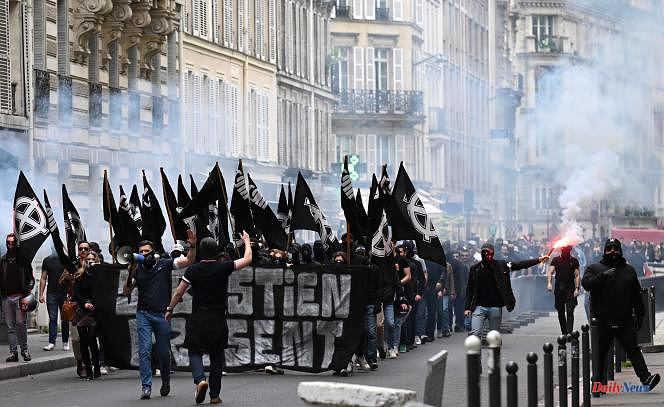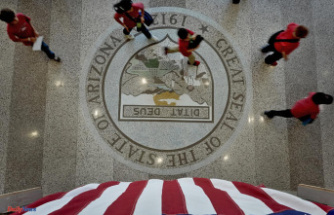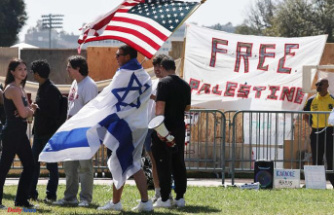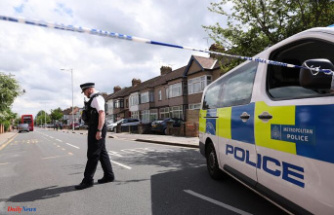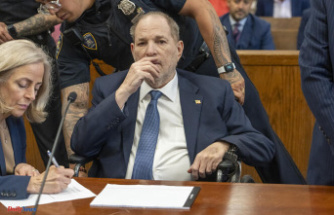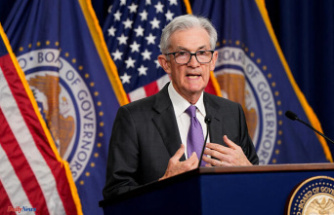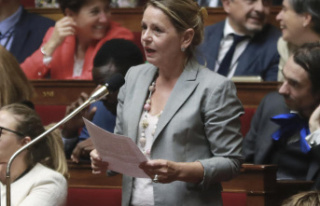Nearly 600 members of neo-fascist groups marched through the streets of Paris on Saturday May 6, causing excitement and concern. While the government has been accused of complacency, Prime Minister Elisabeth Borne spoke of "shocking" images, but recalled the legality of this demonstration, which takes place every year.
From a legal point of view, one fact has questioned many observers: the massive wearing of masks or balaclavas by the participants, in apparent violation of the various legislative provisions aimed at preventing demonstrators from hiding their faces.
What do the laws say?
Three provisions have been adopted in recent years.
After excesses on the sidelines of a NATO summit in Strasbourg in 2009, Interior Minister Michèle Alliot-Marie signed a so-called "anti-balaclava" decree. Since then, article R645-14 of the criminal code provides for a fine of 1,500 euros for anyone hiding their face during a demonstration. To fall under this provision, several conditions must be met:
The penal code recognizes exceptions, such as "local customs" (for example during a carnival) or legitimate reasons, such as a health requirement.
A year later, at the instigation of Interior Minister Brice Hortefeux, another law was enacted, which this time indirectly targeted, without mentioning them, religious signs in the street, and particularly Islamic women's clothing (burqa, niqab).
Law no. 2010-1192 of October 11, 2010 provides that "no one may, in public space, wear an outfit intended to conceal their face. However, it recognizes exceptions, such as "health reasons or professional reasons, or if it is part of sports practices, festivals or artistic or traditional events".
In April 2019, after the degradation of property observed during certain demonstrations of "yellow vests", a new law, more severe than that of 2009, was promulgated. Article 431-9-1 now punishes with one year's imprisonment and a fine of 15,000 euros the fact of deliberately concealing all or part of the face "without legitimate reason" in the context of a demonstration "in course or at the end of which disturbances to public order are committed or are likely to be committed".
“There is almost no difference between this law and that of 2009, notes Audrey Darsonville, professor of criminal law at the University of Paris Nanterre. The only interest was to make it a crime, and therefore to allow people to be placed in police custody and released from the demonstrations. »
Demonstrations are now targeted. Nevertheless, a judgment of the Rennes Court of Appeal in September 2021 confirmed that the mere fact of concealing the face was not sufficient for the offense to be characterized, the use of a gas mask near a demonstration to protect themselves from tear gas constituting a legitimate reason.
What about the neofascist demonstration on May 6?
If the three texts are in theory applicable, in detail, none is specifically designed to respond to this situation. The three jurists whom Le Monde interviewed believe that the masked activists were in violation, without however interpreting the legislation in the same way.
For Jean-Paul Markus, professor of public law at the University of Paris-Saclay, the legislation is largely sufficient. "The act of wearing a hood during a demonstration is punishable by a fine, the act of wearing a hood on a public road is subject to a fine. These three articles are applicable. In his eyes, the anti-burqa article is the easiest to invoke, especially since it is very clear: hiding the face on public roads is illegal, with exceptions, which do not include political demonstrations.
But, objects Alexis Baudelin, lawyer at the Paris bar, this law was precisely not designed to apply to political demonstrations and cannot apply to them. “They fall under freedom of expression, which is very much regulated by European law. The only thing that can restrict it is the violation of public order. Even more than the "anti-balaclava" law of 2009, in disuse, it is the "anti-breakers" law of 2019 which would be the most relevant, because it was designed for the case of demonstrations marked by a disturbance of public order.
However, nuance Audrey Darsonville, the 2019 law was designed to facilitate same-day arrests, not after the fact. “We are in a preventive approach. The legislator thinks that hiding the face is already in anticipation of an offense. The interest [of the article of law] was to allow the police to recover possible troublemakers at the start of the demonstration to get them out. But when the protest is over, what would be the point of employing this article? ".
The threat of public order is therefore essential for the concealment of the protesting face to be illegal, but what exactly does this term cover? "There is no definition and there cannot be one, it is a concept that offers flexibility to the police forces, believes Jean-Paul Markus, who insists on its cultural and changing dimension. What was a problem thirty years ago is no longer a problem today, and vice versa. »
In spirit, today it mainly covers violence against people and damage to public property. However, the neo-fascist parade on May 6 does not fit into these categories. This was also the assessment – criticized – of the prefecture for not banning the demonstration. Questioned by BFM-TV, the prefect of police of Paris, Laurent Nuñez, linked the ultra-right to "violent subversion" and "terrorism", but judged that, until now, "this commemoration [had not ] never caused a disturbance of public order".
“In a demonstration, almost everything can be a threat to public order, recalls Audrey Darsonville. It can be degradation like remarks. However, incitement to racial hatred is an attack on public order ", even if it is less material and spectacular than burning cars or garbage cans.
There are court decisions to that effect. "We can prohibit meetings for the risk of disturbing public order related to the message that is conveyed," explains Alexis Baudelin. It is the Dieudonné case law, which has made it possible to ban shows. »
Tuesday, May 9, the Minister of the Interior, Gérald Darmanin, called on the prefects to ban the next demonstrations of the ultra-right, leaving the courts to judge the legal merits of these bans.
Tuesday, May 16 Corrigendum: Removed a statement that may suggest Nazi salutes were observed during the May 6 parade.

